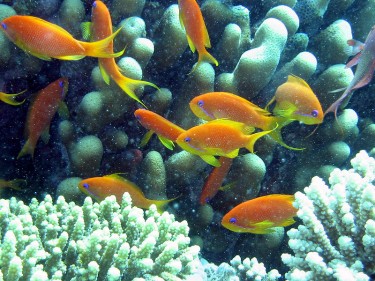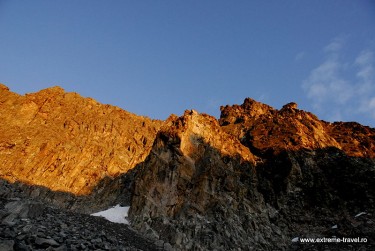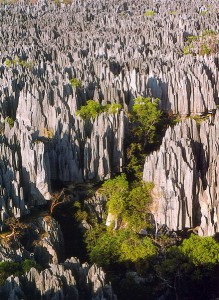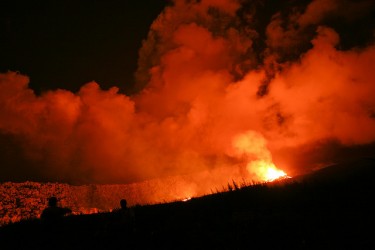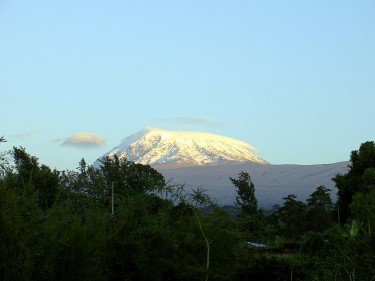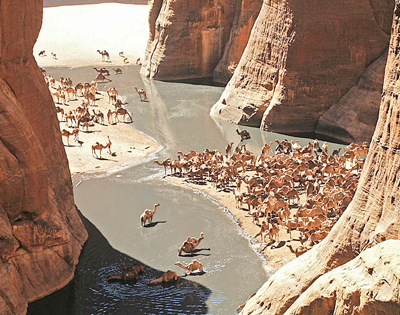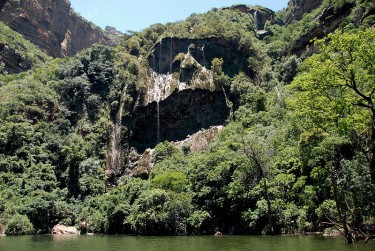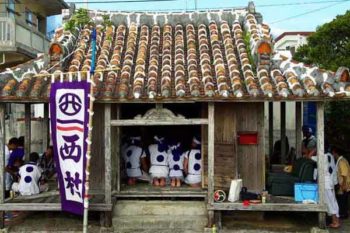An annual competition has been launched for the public to vote for the seven best natural wonders of Africa, with the voting currently underway. The competition is organized by global grassroots endeavor Seven Natural Wonders and at this point includes 12 sites from across the African continent.
Discover the shortlist and other suggested contenders which didn’t make the cut this year.
The Okavango Delta, Botswana

Hippos bathing in the Okavango Delta, Botswana, the world’s largest inland delta by John on Wikipedia CC-license-by
The Okavango Delta is the world’s largest inland delta, created from the rains that fill the Okavango River. The Namibian government has plans to build a hydropower station which would regulate the Okavango’s flow, but environmentalists fear that this project could destroy most of the fauna and flora in the Delta.
The Red Sea Reef, Egypt, Sudan and Eritrea
The Red Sea is a seawater inlet of the Indian Ocean, lying between Africa and Asia. Its Reef stretches over 1,240 miles along the coast of Egypt, Sudan, and Eritrea and contains more than 1,100 species of fish.
Mount Kenya, Kenya
Mount Kenya is the highest mountain in Kenya and the second highest in Africa, after Kilimanjaro. It was covered by an ice cap for thousands of years. The Mount Kenya ecosystem provides water directly for over two million people. The park receives over 16,000 visitors per year.
The Avenue of the Baobabs, Madagascar
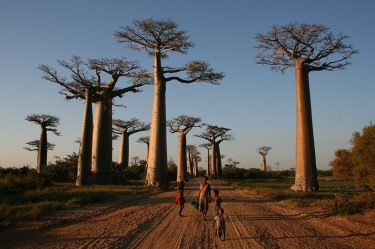
Local people on the Avenue of the Baobabs, Morondava, Madagascar. Image on Wikimedia Commons (CC BY-SA-3.0)
The Avenue of the Baobabs is located between Morondava and Belon’i Tsiribihina in the Menabe region in western Madagascar. Baobab trees, up to 800 years old, stand about 30 meters in height and this particular species is endemic to Madagascar. The site was present in the news recently because it was victim of a wild fire that burnt down newly planted trees around the giant trees.
The Stone Forest of Bamaraha, Madagascar
Tsingy de Bemaraha is a nature reserve located near the western coast of Madagascar in the Melaky Region. This National Park is a UNESCO World Heritage Site, and the main attraction is the stone forest that is composed of limestone needles originating from erosion patterns from groundwater and winds.
Zuma Rock, Nigeria
Zuma Rock is a 725 meter high monolith found in Nigeria on the road out of Abuja. Its nickname ‘Gateway to Abuja’ is derived from this road.
The Peak of Furnace, Réunion Island
Le Piton de la Fournaise (The Peak of Furnace) is a shield volcano on the eastern side of Réunion island in the Indian Ocean. It is one of the most active volcanoes in the world.
The Aldabra Atoll, Seychelles
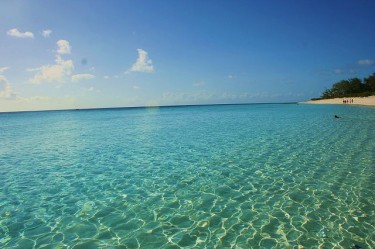
Aldabra Island, Seychelles on FlickR by Johny Shaw (CC-BY-2.0).
Aldabra is the world’s second largest coral atoll and forms part of the Seychelles. Aldabra is almost entirely free of human interference and is home to the world’s largest population of giant tortoises.
Mount Kilimanjaro, Tanzania
Kilimanjaro is the highest mountain in Africa and the highest freestanding mountain in the world at 5,895 meters. The current shrinking and thinning of Kilimanjaro’s ice field is similar to other glacier retreat in mid-to-low latitudes across the globe. At the current rate, Kilimanjaro is expected to become ice-free some time between 2022 and 2033.
Ngorongoro Crater, Tanzania
The Ngorongoro Crater is a large, unbroken, unflooded volcanic caldera located in the west of Arusha in the Crater Highlands area of Tanzania. The crater plays host to almost every individual species of wildlife in East Africa, with an estimated 25,000 animals within the crater.
The Serengeti Migration, Tanzania
The Serengeti migration is the longest and largest overland migration in the world. Each year, the great wildebeest migration begins in the Ngorongoro area of the southern Serengeti of Tanzania in January to March, when the calving season begins; some 750,000 zebra precede the migration of 1.2 million wildebeest.
The Sahara Desert
The Sahara Desert is the largest hot desert in the world. The desert encompasses, at least in part, the countries of Algeria, Chad, Egypt, Libya, Mali, Mauritania, Morocco, Niger, Western Sahara, Sudan, and Tunisia. The southern border of the Sahara is marked by a band of semi-arid savanna called the Sahel.
Bloggers’ suggestions
A number of natural wonders were omitted from the shortlist, so a few bloggers have added their own suggestions via their blogs. A slight controversy was the fact that a few countries were featured several times while others were not mentioned at all, despite having worthy candidates.
The Victoria Falls, Zambia and Zimbabwe
The Victoria Falls at the border of Zambia and Zimbabwe is already selected as one of the seven natural wonders of the world.

Swimming at the edge of Victoria Falls in a naturally formed safe pool, accessed via Livingstone Island. Image on Wikimedia Commons, released into public domain by Ian Restall.
Blyde River Canyon, South Africa
The Blyde River Canyon is located in Mpumalanga and forms the northern part of the Drakensberg escarpment. It is 16 miles (26 kilometers) in length and is on average around 2,500 feet (762 meters) deep. The Canyon consists mostly of red sandstone.
Feel free to add any sites that you feel were omitted in the selection process in the comments section below.
Written by Rakotomalala for Global Voices

